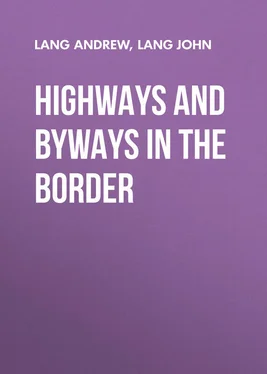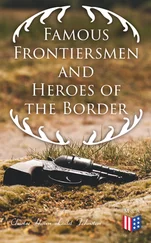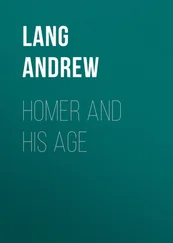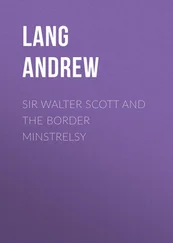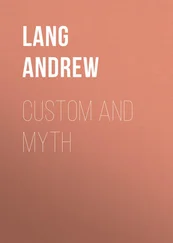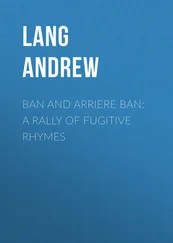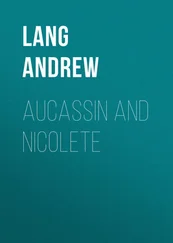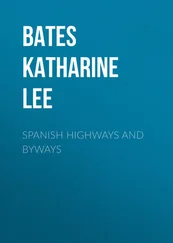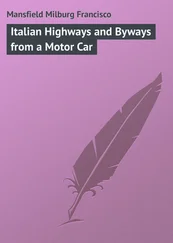Andrew Lang - Highways and Byways in the Border
Здесь есть возможность читать онлайн «Andrew Lang - Highways and Byways in the Border» — ознакомительный отрывок электронной книги совершенно бесплатно, а после прочтения отрывка купить полную версию. В некоторых случаях можно слушать аудио, скачать через торрент в формате fb2 и присутствует краткое содержание. Жанр: foreign_antique, foreign_prose, на английском языке. Описание произведения, (предисловие) а так же отзывы посетителей доступны на портале библиотеки ЛибКат.
- Название:Highways and Byways in the Border
- Автор:
- Жанр:
- Год:неизвестен
- ISBN:нет данных
- Рейтинг книги:4 / 5. Голосов: 1
-
Избранное:Добавить в избранное
- Отзывы:
-
Ваша оценка:
- 80
- 1
- 2
- 3
- 4
- 5
Highways and Byways in the Border: краткое содержание, описание и аннотация
Предлагаем к чтению аннотацию, описание, краткое содержание или предисловие (зависит от того, что написал сам автор книги «Highways and Byways in the Border»). Если вы не нашли необходимую информацию о книге — напишите в комментариях, мы постараемся отыскать её.
Highways and Byways in the Border — читать онлайн ознакомительный отрывок
Ниже представлен текст книги, разбитый по страницам. Система сохранения места последней прочитанной страницы, позволяет с удобством читать онлайн бесплатно книгу «Highways and Byways in the Border», без необходимости каждый раз заново искать на чём Вы остановились. Поставьте закладку, и сможете в любой момент перейти на страницу, на которой закончили чтение.
Интервал:
Закладка:
The Abbey buildings, however, or part of them, continued to be used long after this date; from 1649 to 1771 the transept, roughly ceiled over, served as the parish church, but it was given up in the year last mentioned owing to a portion of the roof falling in whilst service was being held. The kirk "skailed" that day in something under record time; Thomas the Rhymer's prediction that "the kirk should fall at the fullest" was in the people's mind, and they stood not much upon the order of their going.
Kelso was the most southern point reached by Montrose in his efforts to join hands w ith Charles the First after his year of victories. The Border chiefs who had promised aid all deserted him; the Gordons and Colkitto had left him, and he marched north to the junction of Ettrick and Tweed and the fatal day of Philiphaugh.
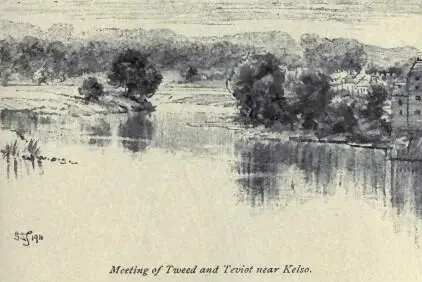
In 1745, Kelso for two days saw Prince Charlie, in his feint against General Wade; from Kelso he turned to Carlisle, his actual, and by no fault of his, hopeless line of invasion of England. The Prince's own strategy, as he wrote to his father, was "to have a stroke for't," as near the Border and as promptly as possible He therefore wished to cross the Tweed near Kelso, and beat up the quarters of the senile Marshal Wade at Newcastle. If he discussed Wade to the same tune as he had settled Cope, English Jacobites might join him. Holding Newcastle, he could thereby admit French reinforcements, while, if defeated, he was near the sea, and had a better route of retreat than if he were defeated going by Carlisle and the western route, in the heart of England. His council of chiefs, unhappily, forced him to take the western route. Halting at Kelso, he sent the best of the Border cavaliers, Henry Ker of Graden, to make a feint on Wade; he rode as far as Wooler, near Flodden. Next day the Prince marched up Teviot, and up Jed, to Jedburgh, with the flower of the fighting clans; then up Rule water, another of the tributaries of Tweed, to Haggiehaugh on the Liddell, and so into England near Carlisle. Of old he would have picked up the Kers, Elliots, and Scotts; Haggiehaugh, where he slept, is Larriston, the home of the Elliot chief, "the Lion of Liddes-dale." But the tartans waved and the bagpipes shrilled in vain, and the Blue Bonnets did not go over the Border. One of the writers of this book possesses the armchair in which the Prince rested at Haggiehaugh.
It was at Kelso, one remembers, that Sir Walter Scott first met James Ballantyne, with whose fortunes his own were afterwards to become so inextricably blended. Scott was then but a growing boy f his health had been giving trouble, and he was sent by his father to stay for six months with an aunt "who resided in a small house, situated very pleasantly in a large garden to the eastward of the churchyard of Kelso, which extended down to the Tweed." During the time of Scott's stay, Ballantyne and he were class-mates under Mr. Lancelot Whale, master of the Kelso Grammar School. The acquaint ance then formed was never quite broken off, and all the world knows the story of its outcome.
We now follow Prince Charles into a rich, well-wooded grassy land, cultivated of old under the Benedictines of Kelso.
"Pleasant Teviotdale, a land
Made blithe with plough and harrow,"
Little more than a mile from that town, by the road leading to St. Boswells up Tweed's southern bank, on a wooded ridge overhanging Teviot and separated from Tweed by but a narrow flat haugh, stands all that is left of Roxburgh Castle, – a few isolated portions of massive wall defended on the north and, east sides by a ditch.
At the west end a very deep cutting divides this ridge from the high ground farther to the west.
Ditch and cutting apparently were in former times flooded with water run in from Teviot, for even as late as the end of the eighteenth century remains of a weir or dam could still be seen stretching across the river. No trace of it now remains. Those who razed the castle took care that the dam should be broken beyond repair, and countless winter floods have long since swept away the little that may have been left. Close to the castle probably stood the once important town of Roxburgh, with its streets and churches, its convent and schools, and its Mint, where many of our Scottish coins were struck. Where are those streets and churches now? Not a trace of them is to be found. The houses were of wood, no doubt, and easily demolished, but the churches, the convent, and the Mint, one would expect to have been of build substantial enough to leave some indication of where they had stood. Roxburgh, more than any other Border town, experienced the horrors of war. Her castle was one of four great Scottish strongholds – Edinburgh, Stirling, Berwick, Roxburgh – and it mattered little whether it were temporarily held by England or by Scotland, on the inhabit ants of the town fell the brunt of those horrors. Castle and town were continually being besieged, continually changing hands, sometimes by stratagem – as when on Shrove Tuesday, 1314, the Good Sir James Douglas, with sixty men, surprised the garrison and took the castle from the English; – sometimes by siege and assault, as when James II was killed by the bursting of "the Lion," one of his own clumsy pieces of ordnance, a gun similar to that ancient weapon, "Mons Meg," which is still to be seen in Edinburgh Castle. To the Queen of James II was due the complete destruction of Roxburgh as a stronghold. The castle had been for something like a hundred years continuously in England's hands, – a rankling sore in Scotland's body. The knife must be used unflinchingly. Under her orders, therefore, when the castle was captured after James's death, the place was thrown down and made entirely untenable; and probably at this time also the dam across Teviot was cut, thus permanently emptying fosse and ditch. Roxburgh ceased then almost entirely to be a place of strength, and time and decay have wiped her out; no man may-say where stood any portion of a town which, in point of population, was once the fourth most important burgh in Scotland. Of the last siege, and the death of James, the historian Pitscottie writes: "The King commanded the souldeouris and men of weir to assault the castell, but the Inglischemen défendit so walieiantlie within, the seige appeirlt so to indure langer nor was beleiffit, quhairthrow the King déterminât to compell them that was within the house be lang tairrie to rander and gif it ower." Reinforcements at this time arrived, "which maid the King so blyth that he commanded to chairge all the gunnis to gif the castell ane new wollie. But quhill this prince, mair curieous nor becam him or the majestie of ane King, did stand neir hand by the gunneris quhan the artaillyerie was dischargeand, his thie bane was doung in twa with ane piece of ane misframit gun that brak in the schutting, be the quhilk he was strickin to the grund and dieit haistilie thereof, quhilk grettumlie discuragit all his nobill gentlemen and freindis that war stand aboot him." Near at hand on the farther bank of Tweed stands, or until lately stood, an old thorn tree which is said to mark the spot where the King fell.
The ancient Roxburgh has utterly disappeared;
"Fallen are thy lowers, and where the palace stood
In gloomy grandeur waves yon hanging wood;
Crushed are thy halls, save where the peasant sees
One moss-clad ruin rise between the trees."
But there lingers yet one relic of the days when her Markets and Trysts were famed throughout the country. St. James's Fair, which w-as held at Roxburgh as long ago as the days of King David I, is still kept each August in the pleasant haugh by the ruins of the castle, between Teviot and Tweed. There, on a little eminence, the Town Clerk of Jedburgh each year reads this Proclamation: "OYEZ, OYEZ, OYEZ." Whereas the Fair of St. James is to be held this – th day of August 19 – , and is to continue for the space of eight days from and after this proclamation. Therefore, in name and authority of Our Sovereign King George V, by the Grace of God of the United Kingdom of Great Britain and Ireland, King, Defender of the Faith, and in name and authority of the Honourable the Provost and Bailies of the Royal Borough of Jedburgh, and in name and authority of a High and Potent Prince the Duke of Roxburgh, and his Bailie of Kelso, I make due and lawful proclamation that no person or persons shall presume to trouble or molest the present Fair, or offer any injury one to another, or break the King's peace, – Prohibiting all old Feuds and new Feuds, or the doing of anything to disquiet the said Fair, under the highest pains of law. As also – that no person or persons make any private bargains prejudicial to the customs and Proprietors of said Fair, – Certifying those who contravene any part of said customs that they will be prosecuted and fined according to law. "GOD SAVE THE KING."
Читать дальшеИнтервал:
Закладка:
Похожие книги на «Highways and Byways in the Border»
Представляем Вашему вниманию похожие книги на «Highways and Byways in the Border» списком для выбора. Мы отобрали схожую по названию и смыслу литературу в надежде предоставить читателям больше вариантов отыскать новые, интересные, ещё непрочитанные произведения.
Обсуждение, отзывы о книге «Highways and Byways in the Border» и просто собственные мнения читателей. Оставьте ваши комментарии, напишите, что Вы думаете о произведении, его смысле или главных героях. Укажите что конкретно понравилось, а что нет, и почему Вы так считаете.
